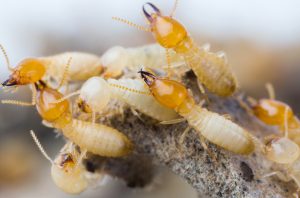Fire Ant Facts
Watch out, here come the fire ants.
- Fire ant is the general name for quite a few species of ants in the genus Solenopsis. They are only a minority in the species, which includes over 200 species of Solenopsis worldwide. Solenopsis are stinging ants and most of their common names demonstrate this, for example, ginger ants and tropical fire ants. Many species also are called red ants because of their light brown color, though species of ants in many other genera are similarly named for similar reasons.
- Fire ants reside in large colonies made up of up to 250,000 worker ants.
- Fire ants are so called because of two reasons – first, they have a reddish appearance and second, they have a very painful sting.
- A typical fire ant colony produces huge mounds in open areas, and feeds mostly on young plants and seeds. Fire ants often attack small animals and can kill them. Unlike many other ants, which bite and then spray acid on the wound, fire ants bite only to get a grip and then sting (from the abdomen) and inject a toxic alkaloid venom called Solenopsin. For humans, this is a very painful sting, a burning sensation, similar to what one feels when burned by fire (hence the name) and the after effects of the sting (or multiple stings) can be deadly to sensitive people. Fire ants are more aggressive than most native species and have driven many other species away from their local habitat.
- Need help with fire ants? Let Rosie’s Pest Control come out and provide you with a treatment plan and estimate. Click here to have someone from Rosie’s Pest Control give you a call to set up an appointment. Memphis area residents only at this time.

 Background about why termites swarm.
Background about why termites swarm.